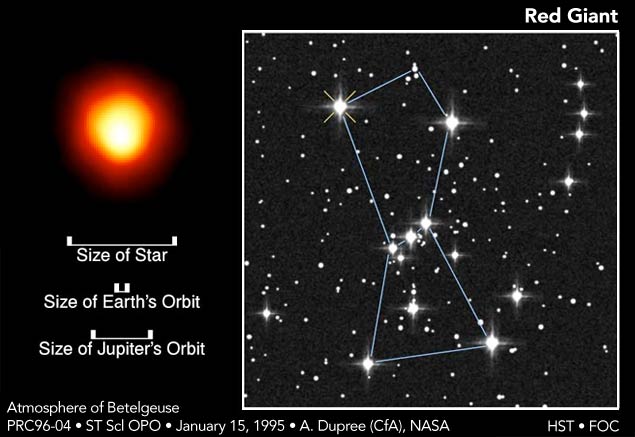| Star Cycle - Birth and Death of a Star The star cycle starts with a nebula or large cloud of gas that collapses under its own gravity to form a star. A stable star such as the Sun steadily generates heat and light through nuclear fusion. Such a star is said to be in its main sequence. The main sequence phase ends when most of the hydrogen in its core has been converted to helium and fusion begins around the core thereby generating and expanding luminosity beyond the core, at which point it becomes a red giant. When the red giant begins to cool at its center, the red giant collapses to form a dwarf star, referred to as a white dwarf because it glows almost white as it cools. If a very large red giant begins to cool or attracts matter from a nearby star, a violent explosion or supernova can occur. |
|||||
|
|||||
Red Giant |
|||||
Site designed by Speedy Turtles Design.
